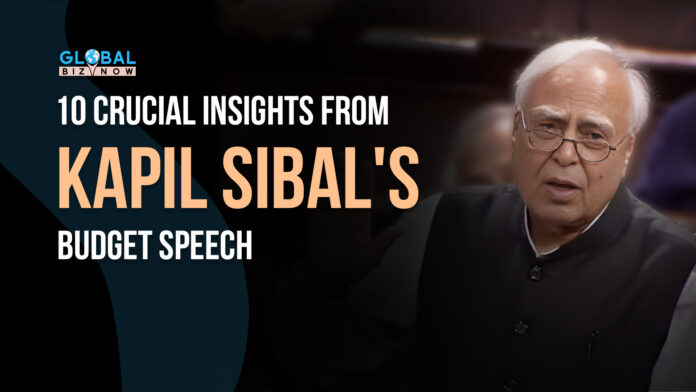The economic crisis in India was starkly highlighted by Kapil Sibal’s critique of the 2024-25 Union Budget. His speech raised critical questions about the government’s strategy for addressing unemployment, skill development, and education reform. Here are the ten key points from Sibal’s speech:
1.) Unemployment Crisis:
- Statistic: According to the India Employment Paper 2024 by the International Labour Organization, 83% of Indian youth are unemployed.
- Trend: Sibal noted a troubling rise in unemployment from 35.2% in 2000 to 65.7% in 2022.
2.) Interconnected Issues:
- Factors: Unemployment is linked to various factors including education, skill development, industrial production, and GDP growth.
- Sector Impact: Most unemployed individuals are from the unorganized sector, with only 10% in organized employment.
3.) Lack of Roadmap for Job Creation:
- Annual Requirement: The budget does not provide a clear plan to create 7-8 million jobs annually for the next 30 years.
- Future Impact: Without a detailed roadmap, addressing the unemployment crisis remains a long-term challenge.
4.) Artificial Intelligence and Job Losses:
- Global Competitiveness: While AI is crucial for global competitiveness, its implementation in India could exacerbate job losses.
- IT Sector: The IT sector, a major employment provider, is experiencing job cuts due to AI adoption.
5.) Educational Reforms and Skill Integration:
- Budget Increase: The education budget saw a slight increase but remains below the promised 6%.
- System Revamp: The education system needs urgent reforms to integrate skills training at the secondary level.
6.) State Autonomy and Decentralization:
- Financial Autonomy: Sibal criticized the reduction in state funds from 41% to 32% due to central government cess and surcharge.
- Local Governance: He advocated for greater state autonomy to manage resources and improve governance efficiency.
7.) Investment in Research and Development (R&D):
- Global Comparison: India’s $47.57 billion R&D investment for 140 crore people is significantly lower compared to the US, China, and Germany.
- University Role: Sibal emphasized the role of universities in generating wealth through innovation and job creation.
8.) Agriculture Sector:
- R&D in Agriculture: Increased investment in agricultural R&D could drive significant economic growth and job creation.
- Budget Allocation: Current budget increases for agriculture are inadequate for meaningful improvements.
9.) Central Control vs. Local Autonomy:
- Education and Healthcare: Centralized control is inefficient; local models are needed for effective management.
- State-Specific Solutions: States should develop and implement their own models for education and healthcare.
10.) Freedom and Vision:
- Empowering Environment: Sibal called for state, education, and citizen-level autonomy, urging the government to reduce centralized control.
- Innovation and Growth: By empowering states and investing in education and R&D, India can achieve sustainable economic growth.

